If you're looking for a straightforward and respectful way to communicate the end of a casual labor arrangement, this termination letter template is exactly what you need. It's important to maintain a friendly tone while clearly stating your intentions, ensuring that both parties are on the same page. By providing a concise explanation and expressing gratitude for the work done, you can keep the relationship amicable. Ready to learn how to draft an effective termination letter? Let's dive in!

Clear subject line
Casual labor termination notice should clearly articulate the reason for termination and include essential details. The subject line should reflect the intent, such as "Notice of Termination of Casual Labor Agreement." This document should specify the date of termination, typically allowing for a notice period of a week (7 days), and clarify the last working day. Include relevant job details, such as position, department, and any notable project involvements. Ensure to mention any outstanding wages or final payments to be settled. Closing remarks should encourage maintaining a positive relationship for future opportunities.
Employee details
An employee termination letter for casual labor should include specific details about the employee and the termination process. The letter should start with the employee's name and job title, followed by their employment start date and any relevant employee identification number. It is essential to include the company's name and address for proper documentation. The date of the letter should be noted to establish the timeline of the termination process. The letter may briefly mention the reason for termination, such as completion of a project, lack of work, or performance-related issues. Additionally, any relevant details regarding the final paycheck, return of company property, and termination date should be clearly outlined to ensure a smooth transition. Finally, polite language should be maintained throughout, wishing the employee well in future endeavors.
Termination date
Casual labor termination typically involves notifying the employee of their end date in a straightforward manner. It includes pertinent details such as the reason for termination, the date it will take effect, and any final arrangements regarding payment or return of company property. Additionally, it can express gratitude for their contributions, emphasizing a respectful closing. Providing contact information for follow-up questions is also beneficial.
Reason for termination
The abrupt termination of casual labor contracts may arise from various reasons, such as budget cuts (financial restrictions affecting project scope), performance issues (inadequate completion of tasks), or conduct violations (breaches of workplace policies). Employees may have contracted under temporary agreements that specify fixed durations or project completion, highlighting the need for clear communication regarding performance expectations. Termination usually occurs through formal notifications (usually via written communication), ensuring that all parties understand the termination reasons, including any associated legal ramifications. In the case of on-the-job incidents (e.g., safety violations at the workplace), immediate action may be warranted to maintain a safe working environment. Proper documentation ensures compliance with labor laws and protects the rights of both parties.
Final compensation and benefits details
Due to a recent restructuring of workforce requirements, the termination of casual labor contracts has taken effect. Final compensation documentation includes payment for all hours worked, as well as any applicable bonuses or overtime pay, calculated at an hourly rate of $15, in line with local labor laws. Benefits, if any, such as accrued vacation days or health coverage options through the employer's plan, will cease effective immediately. Employees will receive their final paycheck through direct deposit or mailed check, within the employer's standard pay schedule, adhering to state regulations to ensure compliance. Additional resources for unemployment benefits may be available at the local Department of Labor office, providing guidance for the transition.

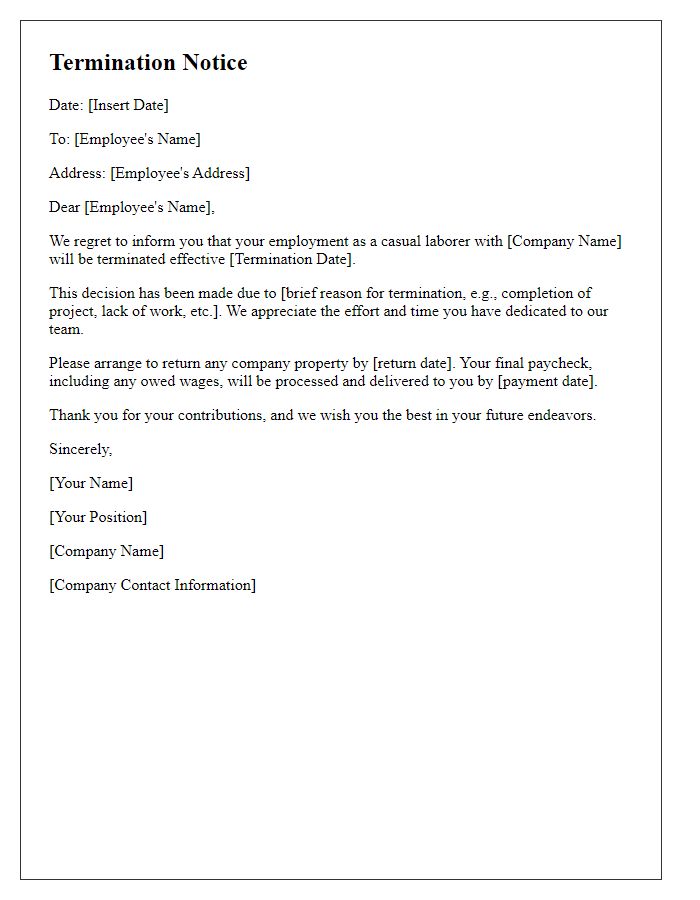
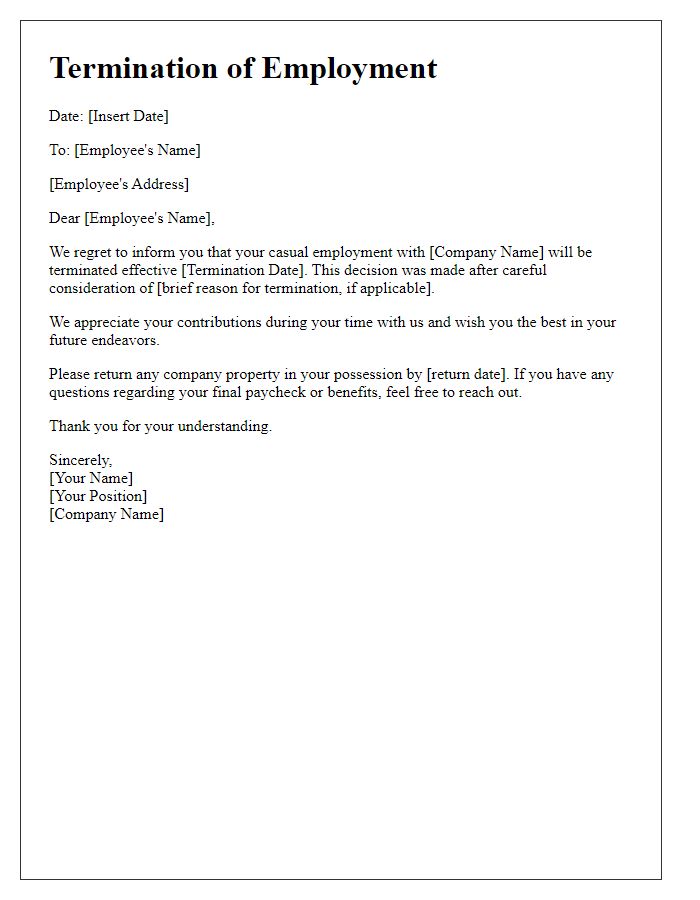
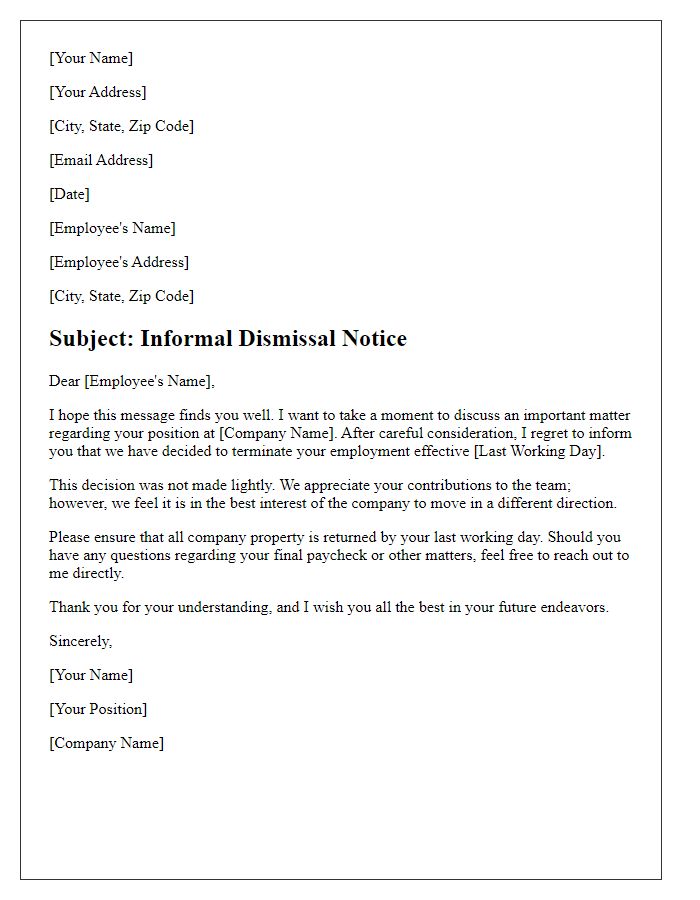
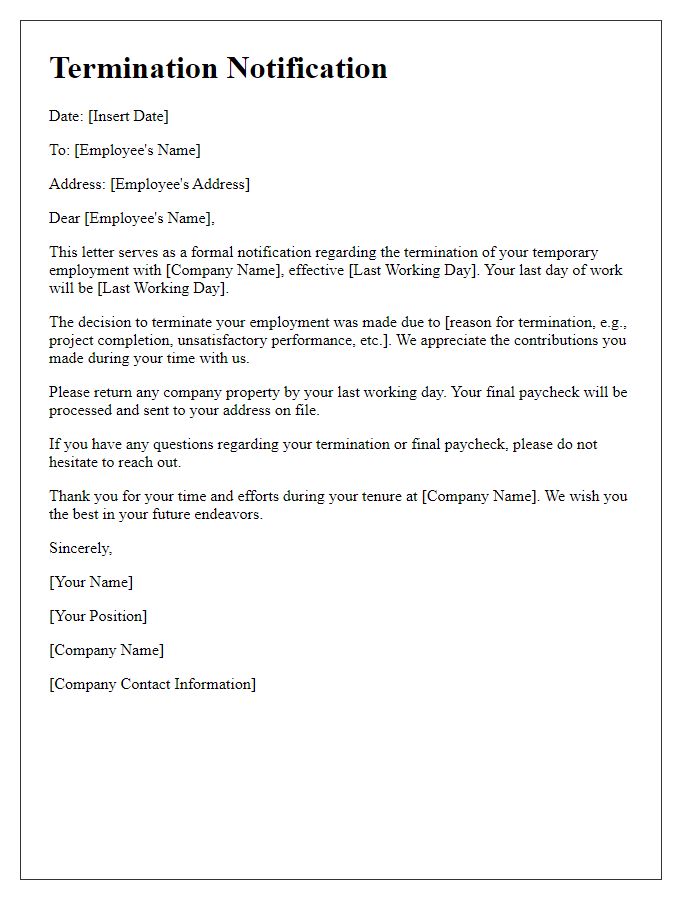
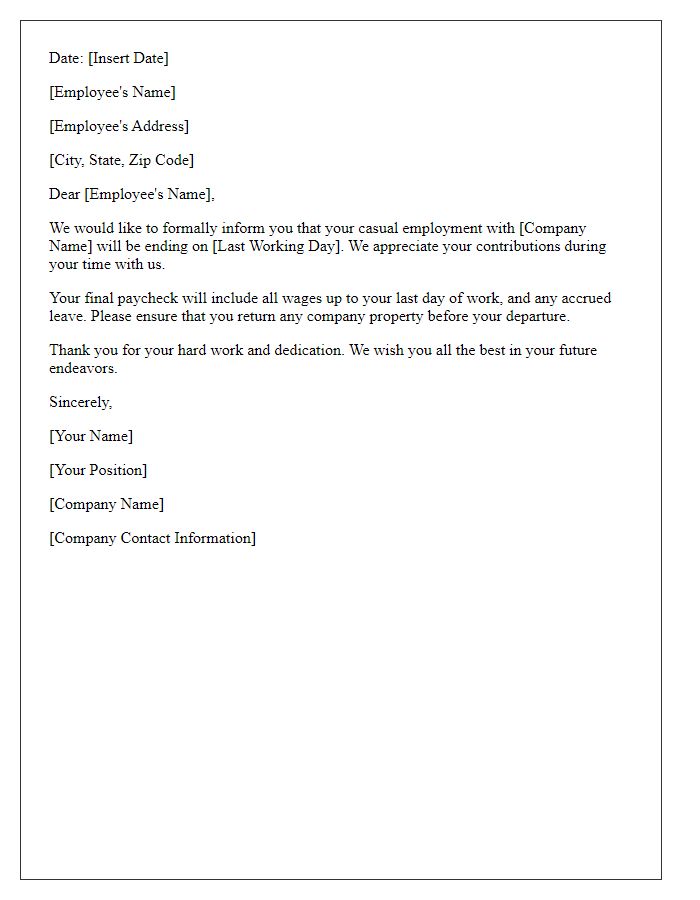
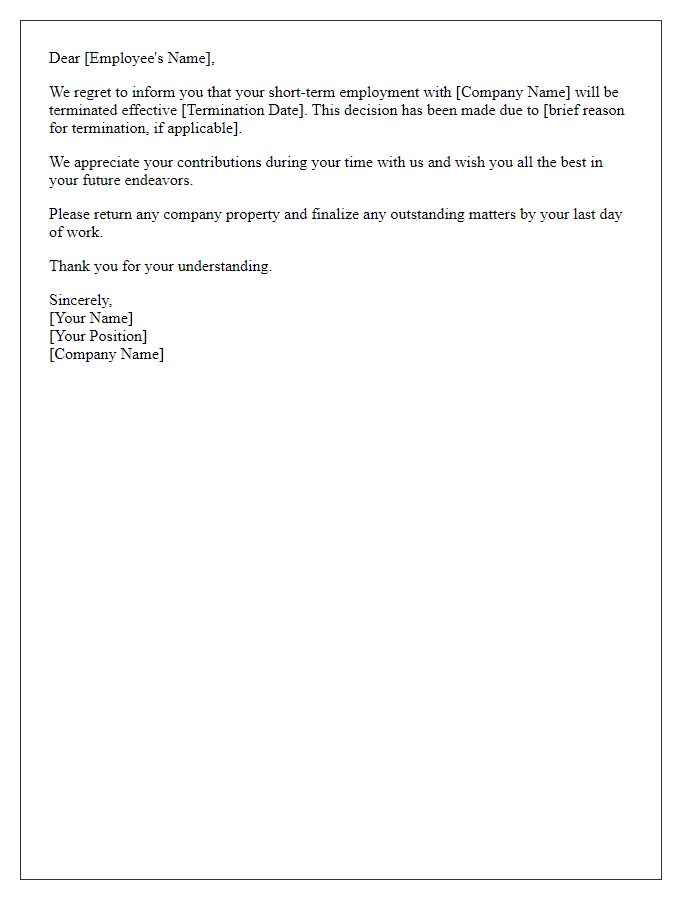
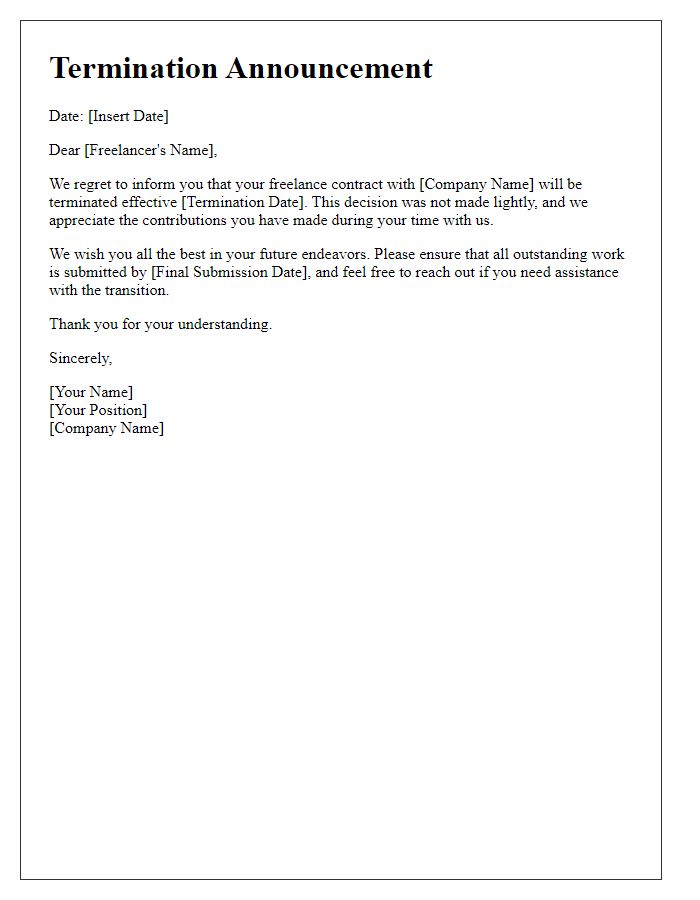
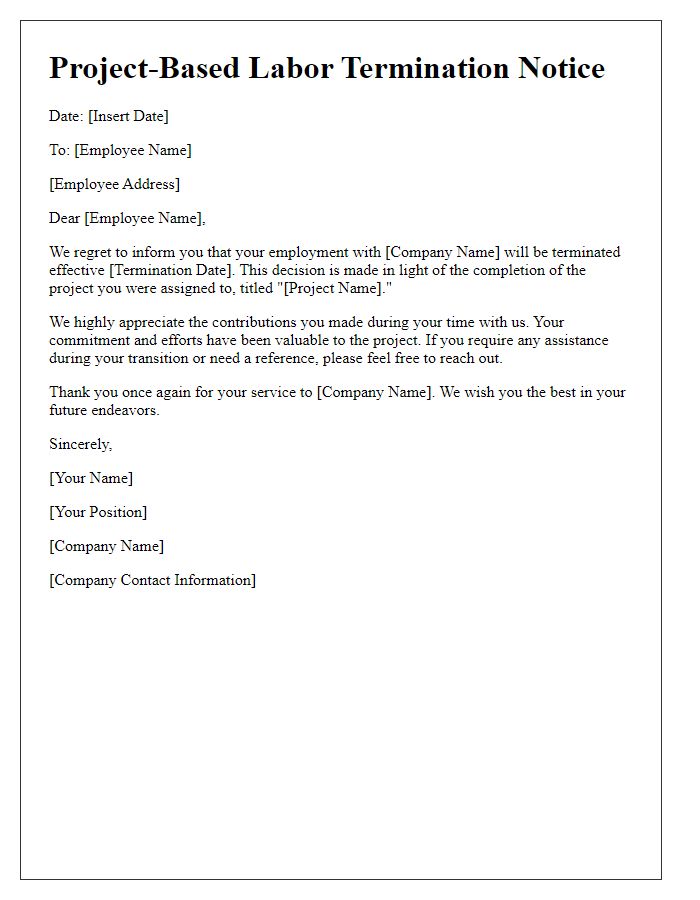
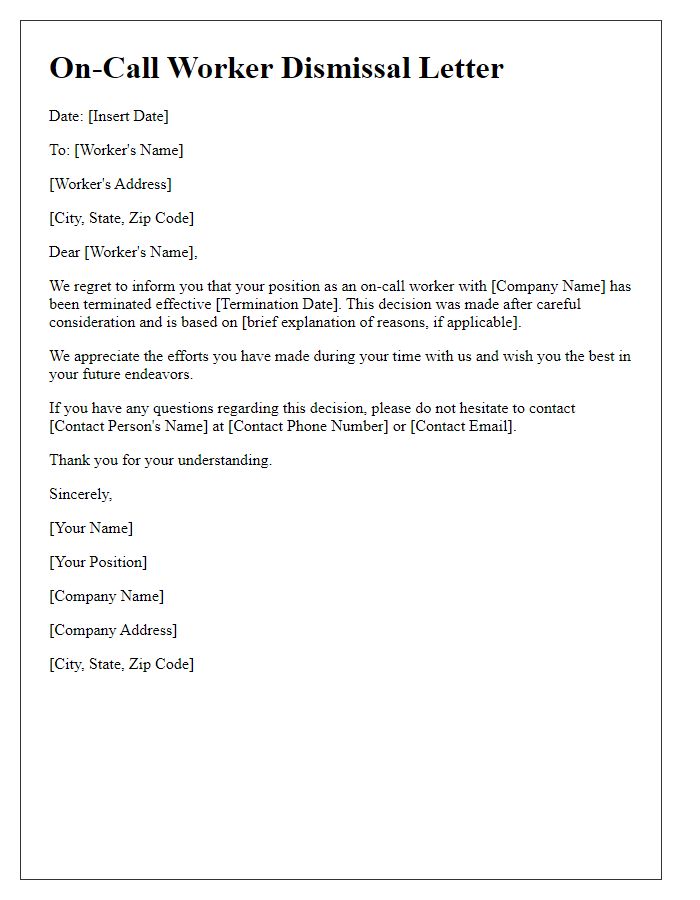
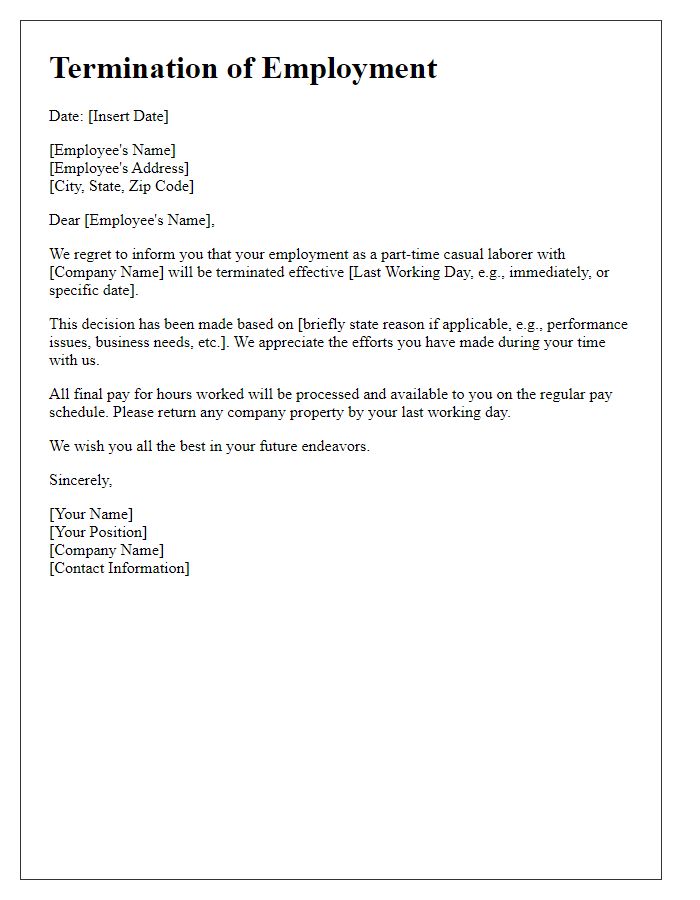

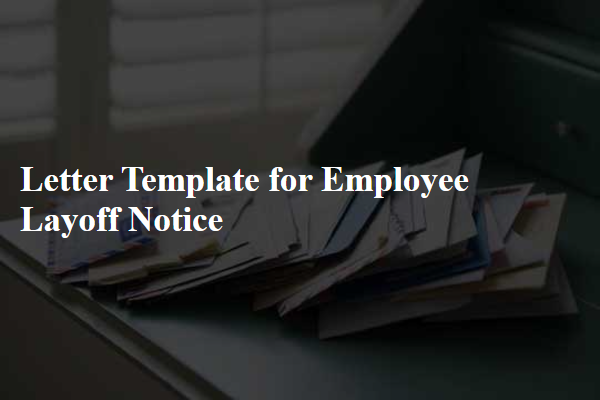
Comments